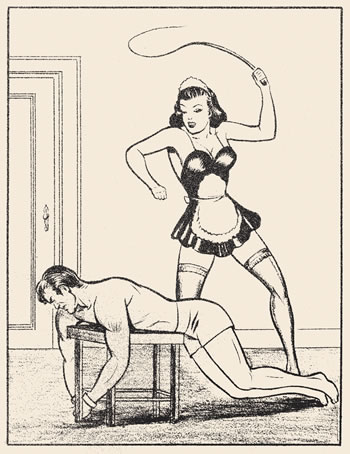LizzieMaine
Bartender
- Messages
- 34,203
- Location
- Where The Tourists Meet The Sea
There were pornographic magazines in the Era, long before Hefner came along, and many of them were as bizarre as anything you can find today if that's your thing. An interesting book called "Tijuana Bibles" came out a few years ago documenting the scurrilous little comic pamphlets of the 1930s in which Andy Gump and Little Orphan Annie and other funny-paper characters and popular celebrities did unspeakable things with and to each other. In comparison to that stuff Hefner was a Little Leaguer.
What Hefner did was take the prurient appeal of a gas-station skin rag and get away with wrapping it up in a veneer of culture and class -- "101 Snappy Poses" crossed with Esquire. He was a Boy From Marketing at heart.
If you really want to see something twisted, look up the stuff Joe Shuster -- the artist who co-created Superman -- drew for under-the-counter porno rags in the 1950s.

Any resemblance to Kryptonian superheroes and plucky girl reporters is purely not coincidental.
What Hefner did was take the prurient appeal of a gas-station skin rag and get away with wrapping it up in a veneer of culture and class -- "101 Snappy Poses" crossed with Esquire. He was a Boy From Marketing at heart.
If you really want to see something twisted, look up the stuff Joe Shuster -- the artist who co-created Superman -- drew for under-the-counter porno rags in the 1950s.

Any resemblance to Kryptonian superheroes and plucky girl reporters is purely not coincidental.








